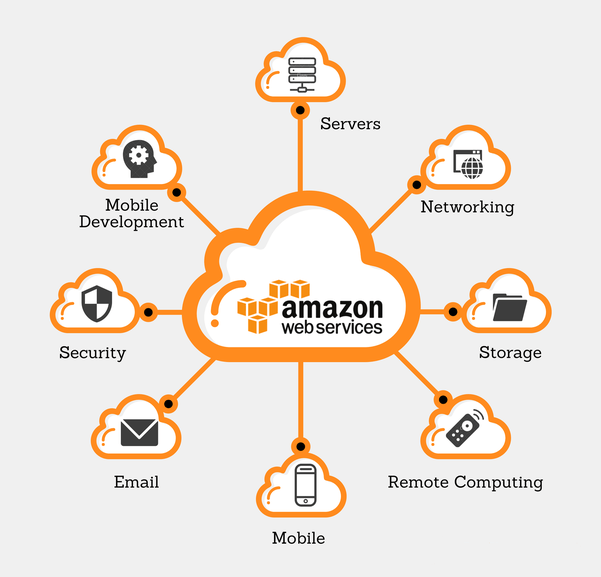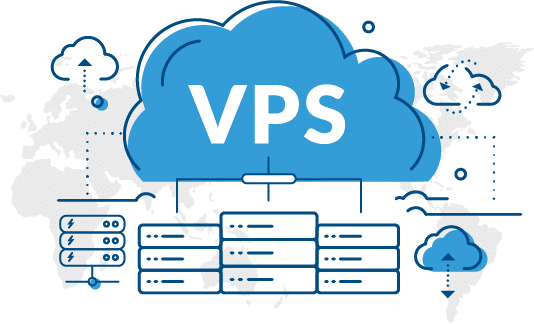Coveredca Small Business
Venturing into the labyrinth of health insurance can be daunting for small businesses. However, with Covered California for Small Business (CCSB), the path becomes clearer and more manageable. This guide illuminates the journey, offering insights and practical tips for leveraging CCSB to safeguard your team’s health and well-being.
The Importance of Health Coverage for Small Businesses
Health coverage is not just a legal obligation; it is a cornerstone of a thriving business. Offering robust health insurance attracts top talent, reduces turnover, and enhances employee satisfaction. Moreover, healthy employees are productive employees, reducing absenteeism and fostering a more dynamic work environment.
What is Covered California for Small Business (CCSB)?
Covered California for Small Business is a state-run marketplace specifically designed to help small businesses provide health insurance to their employees. CCSB offers a variety of plans from leading insurance providers, ensuring that small businesses can find coverage that fits their needs and budgets.
It simplifies the complex world of health insurance, making it accessible and manageable for businesses with 1 to 100 employees.
Understanding the Basics of CCSB
Eligibility Requirements: Who Can Benefit?
To participate in CCSB, your business must have between 1 and 100 eligible employees, with the majority of those employees based in California. Additionally, your business must meet certain criteria regarding the offering of coverage and the contribution towards employee premiums.
These requirements ensure that CCSB remains a viable option for small businesses committed to providing health benefits.
Key Features and Benefits of CCSB
CCSB stands out for its flexibility and comprehensive options. Employers can choose from multiple plan levels, allowing them to balance cost and coverage. Employees have the freedom to select the plan that best suits their needs from a range of offerings.
This dual flexibility ensures satisfaction across the board. Additionally, CCSB provides resources and support to help employers navigate the complexities of health insurance, from enrollment to ongoing management.
Enrolling Your Small Business in CCSB
Step-by-Step Enrollment Process
Enrollment in CCSB is straightforward. Start by creating an account on the Covered California website. Gather necessary information about your business and employees, including payroll data and tax ID numbers. Next, browse available plans, considering both coverage options and costs.
Once you’ve selected the plans that best fit your needs, submit your application and await approval. The process is designed to be user-friendly, with support available at every step.
Important Deadlines and Enrollment Periods
Timeliness is crucial in the enrollment process. Open enrollment periods typically occur annually, but special enrollment periods may be available following qualifying life events, such as marriage or the birth of a child. Staying informed about these deadlines ensures that your business and employees remain covered without interruption.
Choosing the Right Health Plans for Your Team
Types of Plans Available: From HMOs to PPOs
CCSB offers a variety of plan types, including Health Maintenance Organizations (HMOs), Preferred Provider Organizations (PPOs), and Exclusive Provider Organizations (EPOs). HMOs generally have lower premiums and out-of-pocket costs but require referrals for specialist care.
PPOs offer greater flexibility in choosing healthcare providers and do not require referrals, but they come with higher costs. EPOs blend elements of both, providing a middle ground. Understanding these options helps tailor the coverage to your team’s needs.
Comparing Plans: Finding the Best Fit for Your Business
Comparing plans involves evaluating several factors: premiums, deductibles, co-pays, and out-of-pocket maximums. Consider the health needs of your employees, the financial health of your business, and the overall benefits provided by each plan.
Tools and resources offered by CCSB can assist in this comparison, ensuring you make an informed decision that balances cost and coverage effectively.
Financial Considerations
Cost of Coverage: Breaking Down the Expenses
The cost of health coverage encompasses more than just premiums. It includes deductibles, co-pays, and out-of-pocket maximums. Understanding these components helps in budgeting for health insurance. Employers should consider both the direct costs to the business and the potential financial relief provided to employees through comprehensive coverage.
Tax Credits and Subsidies: Maximizing Your Savings
CCSB offers potential tax credits to small businesses that meet certain criteria. These credits can significantly offset the cost of providing health insurance. Eligibility depends on the size of your business, the wages paid to employees, and the percentage of premiums covered by the employer. Taking advantage of these tax benefits can make health coverage more affordable and sustainable.
Customizing Coverage for Diverse Employee Needs
Offering Multiple Plan Options: Why It Matters
Providing multiple plan options caters to the diverse needs of your workforce. Some employees may prefer lower premiums with higher deductibles, while others might prioritize comprehensive coverage with higher premiums. Offering a variety ensures that each employee can find a plan that aligns with their health needs and financial situation, leading to higher satisfaction and better health outcomes.
Addressing Special Health Needs and Preferences
Consider the specific health needs of your employees. Chronic conditions, family planning, and mental health services are critical components of comprehensive health coverage. Ensuring that your chosen plans address these areas can improve the overall well-being of your team. Tailored plans that consider these factors demonstrate a commitment to employee health and can improve retention and morale.
Legal and Compliance Aspects
Understanding the Affordable Care Act (ACA) Requirements
Compliance with the ACA is essential for avoiding penalties and ensuring that your health coverage meets federal standards. The ACA requires businesses with 50 or more full-time employees to offer affordable health insurance that provides minimum essential coverage. Understanding these requirements helps in crafting a benefits package that is both compliant and beneficial to employees.
Ensuring Compliance with State and Federal Laws
Beyond the ACA, various state and federal laws govern health insurance. These laws cover everything from plan offerings to privacy protections. Regularly reviewing and updating your health coverage policies ensures compliance and protects your business from legal issues. Utilizing CCSB resources can help in staying informed about relevant regulations.
Managing Your CCSB Account
Tools and Resources for Employers
CCSB provides a suite of tools to help manage your health coverage efficiently. These include online portals for managing employee information, resources for understanding coverage options, and customer support for resolving issues. Leveraging these tools streamlines the administrative aspects of health insurance, freeing up time to focus on your business.
Updating Employee Information and Coverage
Regularly updating employee information ensures that your coverage remains accurate and effective. This includes adding new hires, removing former employees, and updating changes in personal circumstances that affect coverage. Keeping this information current prevents lapses in coverage and ensures that all employees receive the benefits they are entitled to.
Enhancing Employee Satisfaction with Health Benefits
Communicating the Benefits: Strategies for Engagement
Effective communication is key to ensuring employees understand and appreciate their health benefits. Regular meetings, detailed informational packets, and one-on-one consultations can help convey the value of the provided coverage. Engaged employees are more likely to take full advantage of their health benefits, leading to better health outcomes and higher satisfaction.
Gathering Employee Feedback: Continuous Improvement
Soliciting feedback from employees about their health coverage can provide valuable insights. Regular surveys and open forums for discussion allow employees to voice their concerns and preferences. This feedback can inform future decisions about plan offerings and help address any issues, ensuring that the health benefits remain relevant and appreciated.
Case Studies and Success Stories
Small Businesses Thriving with CCSB
Real-world examples of small businesses successfully using CCSB can provide inspiration and practical insights. Stories of companies that have improved employee satisfaction, reduced costs, and navigated the complexities of health insurance highlight the tangible benefits of CCSB. These success stories serve as powerful testimonials to the value of comprehensive health coverage.
Lessons Learned from Real-World Examples
Analyzing the experiences of other businesses can reveal valuable lessons. Understanding common challenges and effective strategies employed by peers helps in refining your approach to health coverage. These lessons can guide your efforts to provide better health benefits and manage your CCSB account more effectively.
Common Challenges and How to Overcome Them
Navigating Enrollment Hurdles
Enrollment can be a complex process with potential pitfalls. Common challenges include understanding plan options, meeting eligibility requirements, and adhering to deadlines. Strategies for overcoming these hurdles include leveraging CCSB support resources, engaging with insurance brokers, and thoroughly preparing before the enrollment period begins.
Addressing Employee Concerns and Questions
Employees often have questions and concerns about their health coverage. Addressing these effectively requires clear communication and a willingness to listen. Providing detailed information, hosting Q&A sessions, and offering individual consultations can help resolve concerns and ensure employees feel supported and informed.
Future Trends in Small Business Health Coverage
Innovations in Health Insurance
The health insurance landscape is constantly evolving. Innovations such as telemedicine, personalized health plans, and wellness programs are shaping the future of health coverage. Staying abreast of these trends ensures that your health benefits remain cutting-edge and relevant to the needs of your employees.
The Impact of Policy Changes on Small Businesses
Policy changes at the state and federal levels can significantly impact small business health coverage. Keeping informed about potential changes and understanding their implications allows businesses to adapt proactively. Engaging with industry experts and participating in advocacy efforts can also influence policy developments in favor of small businesses.
Conclusion: Empowering Your Business with CCSB
Recap of Key Points
Covered California for Small Business offers a comprehensive solution for small businesses looking to provide health coverage. From understanding eligibility and enrollment to managing your account and enhancing employee satisfaction, CCSB provides the tools and resources needed to navigate the complexities of health insurance.
Next Steps for Small Business Owners
Taking the next steps involves evaluating your current health coverage, considering the benefits of CCSB, and initiating the enrollment process. With the right approach, small businesses can provide robust health benefits that enhance employee well-being and support business growth.
Additional Resources and Support
Where to Find Help: CCSB Support Channels
CCSB offers various support channels, including online resources, customer service representatives, and in-person assistance. These channels provide
the help needed to navigate enrollment, manage your account, and address any issues that arise.
Educational Materials and Workshops
Educational materials and workshops offered by CCSB provide valuable insights into health coverage options, compliance requirements, and best practices. Participating in these educational opportunities ensures that you remain informed and capable of making the best decisions for your business and employees.





